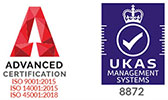According to Toyota, a site survey provides a warehouse with the opportunity to expand, even if it “grows up instead of out”. This essentially means that a site survey is essential if you’re wanting to expand your warehouse property. It’s something that’s needed should any building work or project needs to be carried out in a commercial capacity.
In this article, we’ll be going through what a site survey is, why it’s needed, what’s included and, finally, the methods and practices used in order for it to be as effective as possible. With this in mind, let’s take a closer look at site surveys for warehousing and distribution, as well as for other industries and sectors.
C
What is a site survey?
Essentially, a site survey is an assessment of an area of land. It’s used to determine suitability for construction or other developments. This can include anything from a housing project right through to the construction of a warehouse. A site survey would also be needed if you’re looking to expand or extend your warehouse or premises, for whatever reason.
The results of a survey will be used in order to determine whether or not that land can be built upon. It cannot be built upon if it has a negative effect on the environment or wildlife. A site survey needs to be done before any building work can be done. It might be that a site survey throws up some issues or some compromises that you need to adhere to. Essentially, it dictates the design and layout of your project, depending on the findings.
C
Why do I need a site survey?
A site survey is often needed at the conclusion of a project. This is because it provides valuable insight, data and information about the local environment. The information collected determines the best layout and design for a project, which is the sole reason as to why a site survey is needed.
It also helps to ensure that your project is adhering to all of the rules, regulations and laws associated with it. As such, it protects you, your business and your reputation. Finally, a survey will identify and mitigate hazards, therefore ensuring the project is carried out as safely as possible. In summary, here’s why you need a site survey:
- It ensures accuracy and precision – a site survey is built on accurate and precise data
- It aids in risk mitigation – it identifies hazards in the project, therefore protecting people and the environment in the process
- It enables resource optimisation – site surveys will optimise the use of resources, including labour, materials and equipment available. As such, it can result in increased efficiency and productivity as well as reduction in associated costs
- It takes environmental considerations onboard – a site survey will work to assess the environmental impact of a project, therefore protecting against ecological damage
C
What does a site survey include?
Typically, a site survey will involve an analysis of the environment, such as terrain, vegetation, soil types and conditions, existing structures, topography, elevation and contour lines, to name just a few factors that are taken into account during a traditional survey. It can also involve looking into the local climate, including things like temperature and humidity.
Where this won’t always change that much in the UK, the temperature often varies from the south from the north. The temperature and humidity in London will be completely different from the temperature and humidity in Glasgow, for instance. Once the data has been collected and analysed, it’s used to make informed decisions, such as: layout and project design.
C
What are the methods used in site surveys?
Site surveys come in a wide range of different forms. Not every site survey is the same. It can depend on the industry you work in or the size of your premises or project. As such, there are a wealth of different survey practices and methods that are used.
This makes them far more tailored and relevant to the business, premises or project that’s undergoing a site survey. So what are the methods used in site surveys? Let’s take a closer look:
- Through data collection – this involves collecting relevant data during the survey. It can include things like topography, soil composition, existing structures and environmental conditions
- Technology utilisation – this means using different types of technology, such as GPS systems, drones, remote sensing and so on. This helps to enhance accuracy and efficiency of the survey itself
- Expertise and collaboration – the practice of asking for secondary opinions or engaging with professionals and specialists in related fields. Examples include: geology, environmental science and so forth
- Regulatory compliance – this involves complying seamlessly with local and general rules, laws and regulations, especially when looking at environmental factors
C
C
Multy Lift has over three decades of experience in the material handling industry. We are able to provide customers throughout the UK with safe and reliable pieces of warehouse equipment that will help you to get the job done. If you would like further information about our new and used warehouse machinery, get in touch with a member of our friendly, knowledgeable team today – we’re always pleased to hear from you.







